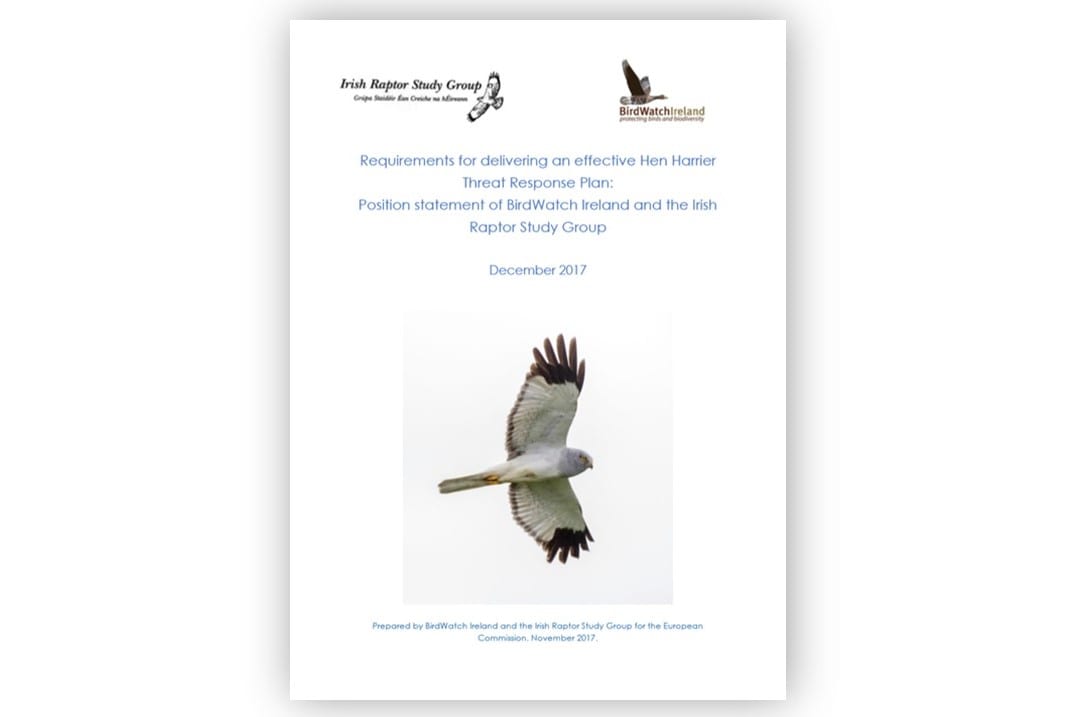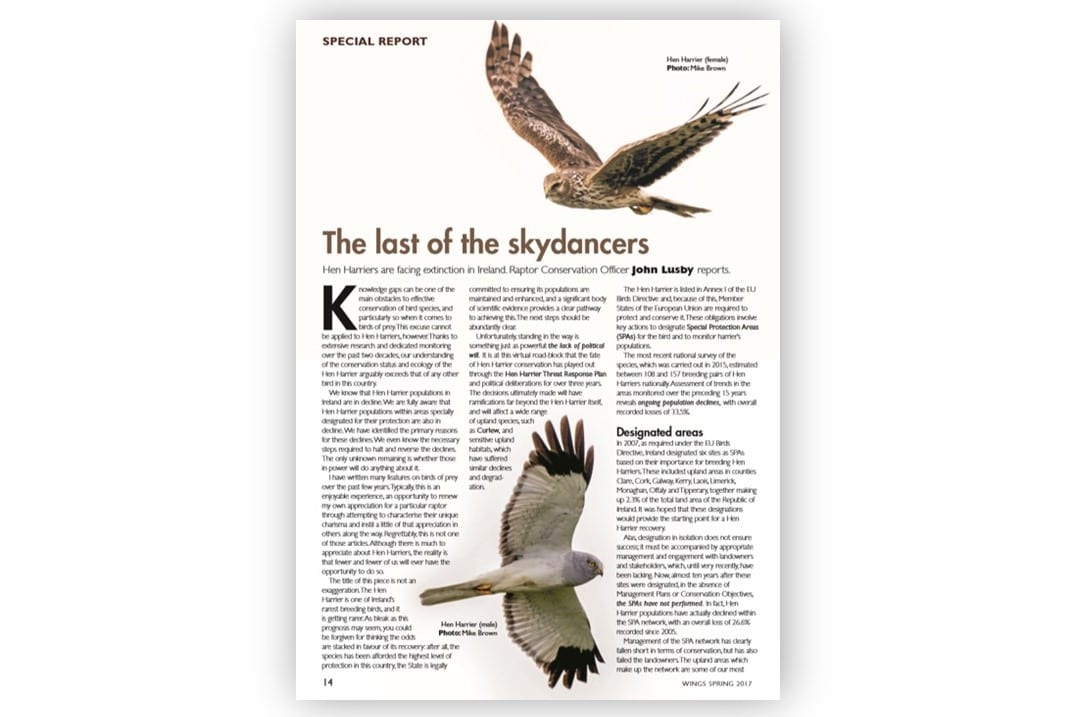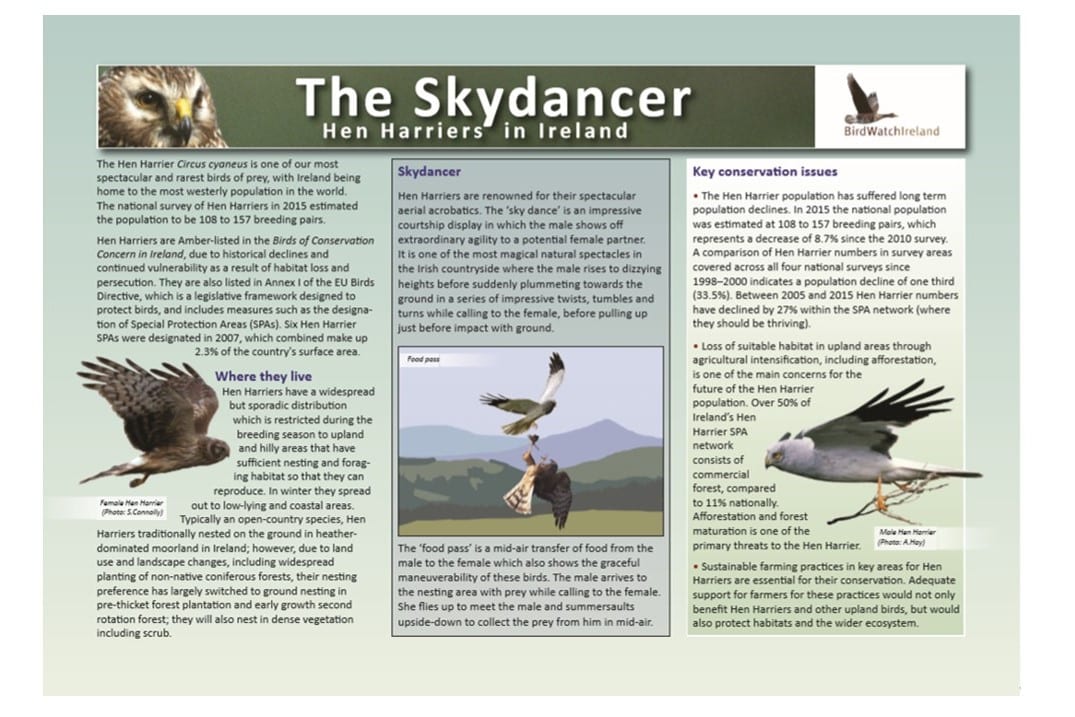
One of our most spectacular and rarest birds of prey, the Hen Harrier has suffered long-term declines and its future in our uplands hangs in the balance.
One of our most spectacular and rarest birds of prey, the Hen Harrier has suffered long-term declines and its future in our uplands hangs in the balance.
Hen Harriers are Amber-listed in the Birds of Conservation Concern in Ireland, due to historical declines and continued vulnerability as a result of habitat loss and persecution. They are also listed in Annex I of the EU Birds Directive, which is a legislative framework designed to protect birds, and includes measures such as the designation of Special Protection Areas (SPAs). Six Hen Harrier SPAs were designated in 2007, which combined make up 2.3% of the country’s surface area.
The Hen Harrier population has suffered long term population declines. The 2015 national survey estimated at 108 to 157 breeding pairs, which represents a decrease of 8.7% since the 2010 survey. Between 2005 and 2015 Hen Harrier numbers have declined by 27% within the SPA network (where they should be thriving).
Loss of suitable habitat in upland areas through agricultural intensification, including afforestation, is one of the main concerns for the future of the Hen Harrier population. Over 50% of Ireland’s Hen Harrier SPA network consists of commercial forest, compared to 11% nationally. Afforestation and forest maturation is one of the primary threats to the Hen Harrier.
Watch the spectacular ‘skydance’ and why the Hen Harrier is such an important part of our uplands and understand the challenges they face in an ever-changing landscape.
Ear to the Ground explores the relationship between Hen Harrier and forestry and the pressures that both Hen Harriers and farmers face in the uplands.


